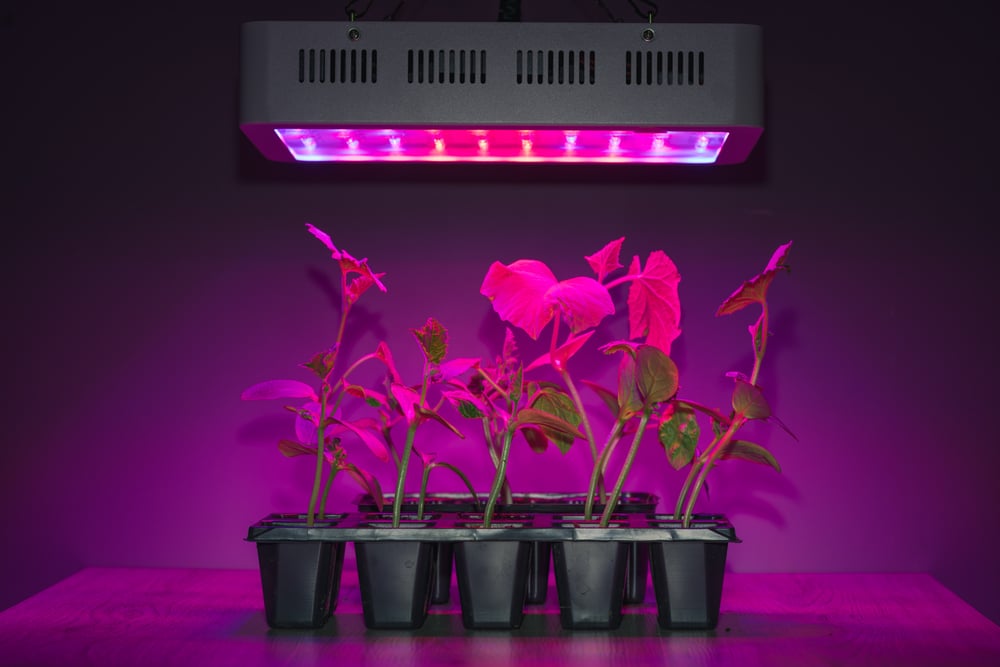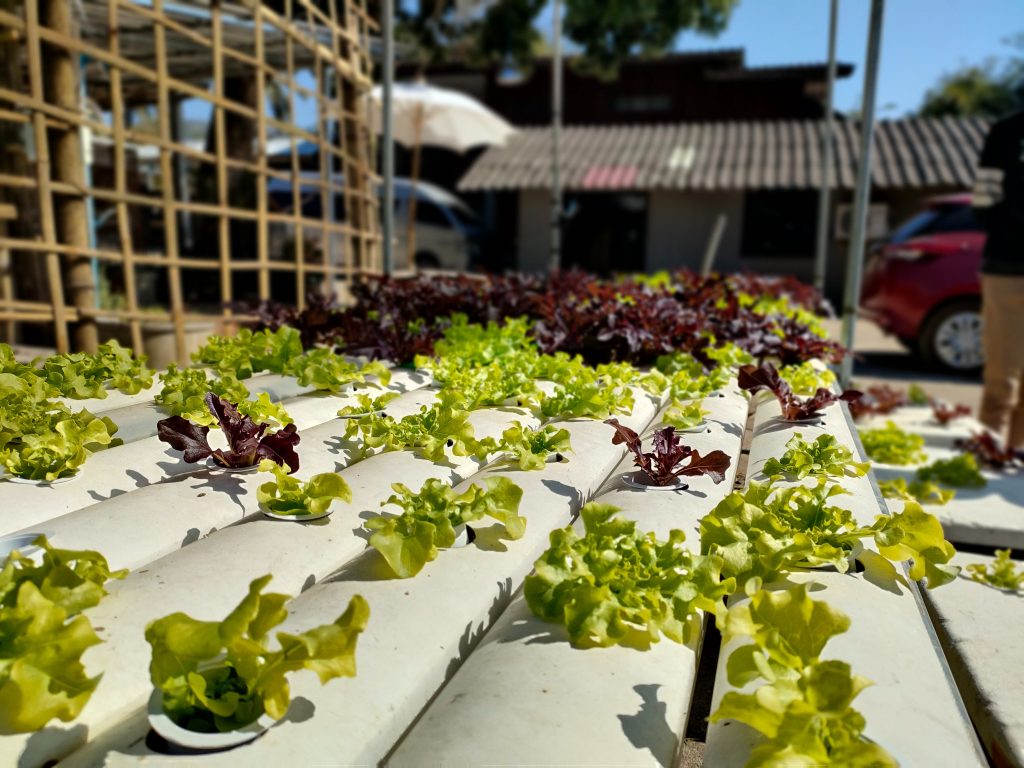A grow light is an artificial light source designed to provide light needed for plants to grow and thrive indoors. Grow light serves as sunlight, which gives plants energy needed for proper growth.
They are often used for indoor gardening, hydroponics, and other forms of indoor plant cultivation, where natural sunlight may not be available or sufficient. Grow lights come in various types, including fluorescent, LED, and high-intensity discharge (HID) lights, and they can be adjusted to emit different wavelengths of light, such as blue, red, and white.
The specific spectrum and intensity of light produced by a grow light can have a significant impact on plant growth and development, including influencing the timing of flowering and fruiting, as well as the overall size and quality of the plants.
Can regular lamps be used as grow lights?
While regular lamps can provide some light for plants, they are not typically effective as grow lights for several reasons.
- Regular lamps typically emit light that is not the optimal spectrum for plant growth. Plants require specific wavelengths of light, such as red and blue, to carry out photosynthesis effectively. Most regular lamps emit a broad spectrum of light that is not tailored to meet the specific needs of plants.
- Regular lamps do not produce enough light intensity to support plant growth. Plants need a certain amount of light intensity, typically measured in lumens or lux, to thrive. Most regular lamps emit a relatively low level of light intensity, which may not be sufficient for plants to grow and develop properly.
- Regular lamps are not designed to emit light for extended periods, as grow lights are. Plants need a consistent light source for several hours each day to maintain their growth and development.
Can any LED light be used as a grow light?
Not all LED lights are suitable for plant growth, but LED grow lights that emit the correct spectrum and intensity of light can be an effective alternative to traditional grow lights.
The most important factor to consider when choosing an LED light for plant growth is its spectrum. Plants require specific wavelengths of light, such as red and blue, to carry out photosynthesis effectively. Therefore, it’s important to choose an LED light that emits light in the correct spectrum for plant growth.
Difference between a grow light and a regular light
The main difference between a grow light and a regular light is the spectrum of light they produce. Grow lights are specifically designed to emit the wavelengths of light that plants need for photosynthesis and growth, while regular lights emit a broad spectrum of light that is not tailored to plant growth.
Grow lights typically emit more of the red and blue wavelengths of light that are most important for photosynthesis, while regular lights emit a wider range of colors that are not as beneficial for plant growth.
This difference in spectrum can have a significant impact on plant growth and development, including the timing of flowering and fruiting, as well as the overall size and quality of the plants.
Another difference between grow lights and regular lights is the intensity of light they produce. Plants require a certain amount of light intensity, typically measured in lumens or lux, to thrive. Grow lights are designed to provide high-intensity light for extended periods, while regular lights are not.
The design of grow lights is often more specialized than that of regular lights. Grow lights may be adjustable to emit different wavelengths of light, have cooling systems to prevent heat buildup, and be designed to cover a specific area or type of plant.

Advantages of using grow light
Here are some few advantages of using grow lights;
- Ability to grow plants indoors: Grow lights allow plants to be grown indoors, even when natural sunlight is not available or insufficient. This makes it possible to grow plants year-round and in any location, regardless of climate or season.
- Better control over plant growth: With grow lights, it’s possible to control the spectrum, intensity, and duration of light exposure to plants. This allows for better control over plant growth, flowering, and fruiting.
- Increased yield: Grow lights can promote faster and more vigorous plant growth, resulting in higher yields and better quality produce.
- Energy efficiency: Compared to traditional lighting sources, such as incandescent or fluorescent lights, LED grow lights are more energy-efficient and can result in lower electricity bills.
- Longer lifespan: LED grow lights have a longer lifespan than traditional lighting sources, meaning they will need to be replaced less frequently, reducing overall costs.
- Reduced pest and disease risks: By growing plants indoors with grow lights, the risk of pests and diseases is reduced, as the plants are less exposed to external environmental factors.
- Flexible placement options: Grow lights can be positioned in different locations and angles to provide optimal light exposure for plants. This flexibility allows for more efficient use of space and resources.
Disadvantages of using grow light
As good as grow lights seem to sound, they also have disadvantages, they include;
- High cost of purchase: High-quality grow lights can be expensive to purchase, especially if you need to cover a large area or grow a variety of plants with different light requirements.
- Heat generation: Grow lights can generate a significant amount of heat, which can be detrimental to plant growth if not managed properly. The heat can also increase energy consumption and result in higher electricity bills.
- Light pollution: Grow lights emit bright light, which can be disruptive to sleeping patterns for both humans and animals. This is particularly important to consider if you are growing plants in a living space or a densely populated area.
- Electrical problems: Grow lights can pose a risk of electrical shock or fire if not installed and maintained properly. It’s important to follow safety guidelines and consult a professional if needed.
- Spectrum limitations: While grow lights are designed to provide the optimal spectrum of light for plant growth, they may not be able to replicate the full range of wavelengths found in natural sunlight. This can impact plant growth and development, particularly for certain types of plants.
- Limited range: Grow lights have a limited range of coverage, which means that they may not be able to provide sufficient light for plants located outside of the immediate light source
Read also: Vertical farming
Plants that do well with grow lights
Many plants can thrive under grow lights, but here are a few examples of plants that are well-suited for indoor cultivation with grow lights:
- Leafy greens: Plants such as lettuce, kale, spinach, and arugula can do very well under grow lights. They typically require less light than fruiting plants and can be grown in small spaces.
- Herbs: Herbs such as basil, parsley, cilantro, and mint can be grown indoors with grow lights, and they don’t require as much space as some other types of plants.
- Tomatoes: Tomatoes are a popular fruiting plant that can be grown indoors with grow lights. They require more light than leafy greens or herbs, but they can produce a high yield if given the right conditions.
- Peppers: Peppers, both sweet and hot varieties, can also be grown indoors with grow lights. They require more light than leafy greens or herbs but can produce fruit with the right conditions.
- Succulents: Succulents are known for their ability to grow in low-light conditions, making them a great option for indoor cultivation with grow lights.
- Flowers: Many flowering plants, such as African violets, orchids, and begonias, can be grown indoors with grow lights. They require more light than leafy greens or herbs but can produce beautiful blooms if given the right conditions.
The bottom line
Grow lights are an essential tool for indoor plant cultivation, providing the necessary light spectrum for photosynthesis and promoting healthy plant growth. They allow gardeners to grow plants year-round and in any location, regardless of natural sunlight availability or climate conditions.
